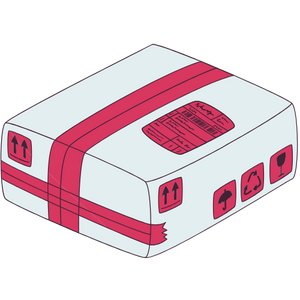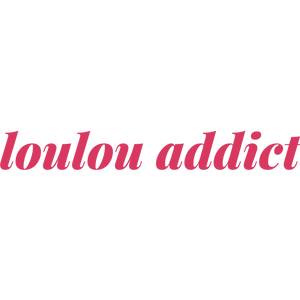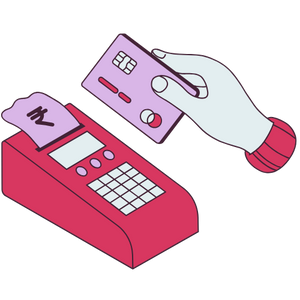Why is my ovulation painful?

In the middle of your menstrual cycle, about a week after your period ends, do you feel a twinge on one side of your lower belly, near your left or right ovary? Don’t worry—this just means you’re ovulating!
While most women feel little or nothing during this new phase of the hormonal and female cycle, others notice it and may even find it uncomfortable.
Why do we experience such ovulation pain? What can cause painful ovulation?
Louloucup, a brand of healthy, organic, and comfortable menstrual products (underwear, swimsuits, and cups), helps you have a better menstrual cycle experience.
In this article
Ovulation: the center of the menstrual cycle
What exactly happens during ovulation?
Which hormones play a role during ovulation?
FSH and LH
Progesterone and estrogen
Why do I feel pain during ovulation?
Symptoms: What exactly do ovulation pains feel like?
The reasons for ovulation pain and painful ovulation
Ovulation issues: abnormalities, conditions, and pain
Absence of ovulation and ovulatory disorders Conditions that interfere with ovulation
Side question: Which Louloucup period underwear should I wear during ovulation?
Ovulation: menstrual cycle, fertile window, and egg
There are four main phases in a woman’s hormonal cycle: menstruation, the follicular phase, ovulation, and the luteal phase. Let’s take a closer look at the ovulatory phase. What exactly happens in our bodies?
Ovulation: the midpoint of the menstrual cycle
The tipping point between the follicular phase and the luteal phase, ovulation is a unique stage of the menstrual cycle, even though it only lasts one day. This is when you are most fertile and have the highest chance of getting pregnant.
The fertility window starts a little before ovulation and ends a bit after (since sperm can live 2 to 5 days depending on conditions). It’s a handful of days during which, if you have unprotected sex, you’re most likely to conceive.
What exactly happens during ovulation?
It’s around day 14 or 15, if you have a 28-day cycle, that ovulation occurs. In your ovaries, an egg that has taken time to mature (throughout the follicular phase) reaches maturity. The ovarian follicle, a sort of sac, contains oocytes.
A single mature egg is released from either the right or left ovary. That’s why some women feel a slight pinch when the egg detaches. Ovulation is the precise moment when the egg is released and travels down the fallopian tubes toward the uterus.
Which hormones play a role during ovulation?
FSH and LH
The pituitary gland, which is in the brain, secretes FSH during the first part of the cycle. FSH, or follicle-stimulating hormone, stimulates the ovaries and helps eggs or oocytes mature.
A few days before ovulation, the hypothalamus—another small part of the brain—releases another essential hormone: LH, or luteinizing hormone. Around day 14, LH levels peak, triggering the release of the egg. Ovulation then takes place!
You can see that ovulation is a pretty complex process, triggered by the secretion of various hormones in your body, especially from the brain, which sets off a chain reaction. At the slightest irregularity, the whole process gets thrown off and ovulation can be disrupted.
Progesterone and estrogen
The released ovum then produces its own hormone, progesterone. This hormone is essential for the proper implantation of a fertilized egg. Progesterone causes the endometrium (the uterine lining) to thicken, creating a welcoming environment for the sperm-fertilized egg to attach and develop under the best possible conditions.
If the egg isn’t fertilized and there’s no implantation, hormone levels drop (estrogen and progesterone fall). The thickened endometrium is no longer needed and sheds. This is when your period starts again and a new cycle begins!
Why does ovulation hurt?
The chosen follicle, which has grown throughout the follicular phase, suddenly releases the egg. This large sac, which can reach up to 25mm, bursts and releases the egg as well as fluid.
Symptoms: What exactly do ovulation pains feel like?
Ovarian pain related to ovulation lasts only a few hours to a maximum of 2 days. The good news: ovulation pain never lasts long.
From mild discomfort to more intense pain, ovulation pain varies from woman to woman. These pains are often compared to cramps, or sometimes to a sharp, sudden, and localized tension. The pain is usually felt on one side—the ovary releasing the mature egg. With each new cycle, the pain may switch sides.
Causes of ovulation pain and painful ovulation
Doctors and researchers don’t all agree; several reasons may explain painful ovulation:
- The level of the LH hormone rises quickly and suddenly during ovulation, which can cause cramps.
- Another explanation: when the egg is released from the ovary, fluid can irritate the nerves or the peritoneum.
- Ovaries are tiny glands held in place by thin ligaments. During ovulation, the mature egg can get quite large and create some tension.
- The fallopian tubes contract to help the egg move along, and these contractions can be painful.
The corpus luteum, the shell of the empty ovarian follicle, can also cause pain. - The mature follicle may not rupture at the expected time and can continue to grow, meaning the egg isn’t released and ovulation doesn’t occur. This can be really painful and debilitating.
Our Louloucup selection
Ovulation issues: abnormalities, conditions, and pain
What conditions can affect or disrupt ovulation?
Absence of ovulation and ovulatory disorders
If you have irregular menstrual cycles, ovulation may be disrupted. There can also be menstrual cycles without ovulation—these are called anovulatory cycles. Several reasons may explain a lack of ovulation and ovulatory disorders:
- Hormonal disorders: For example, PCOS (polycystic ovary syndrome) prevents ovarian follicles from maturing properly, so they accumulate in the ovary and none are released. Ovulation doesn’t occur.
- Thyroid issues—a butterfly-shaped gland at the base of the neck—can interfere with healthy ovulation, especially in cases of hypothyroidism.
- Endocrine disorders: for example, hyperprolactinemia and its excessively high level of prolactin (the lactation hormone). This interferes with the production of LH and FSH, and therefore with ovulation.
- Too much stress can disrupt your whole body, especially LH, the luteinizing hormone. Without LH, there’s no ovulation.
- Smoking increases the risk of ovarian insufficiency (higher FSH levels). Smokers reach menopause earlier than non-smokers.
- A diet high in fat and saturated foods can negatively affect ovulation.
Conditions that interfere with ovulation
Certain medical conditions can affect ovulation:
- various hormonal disorders,
- Endometriosis,
- untreated chlamydia can cause blockage of the fallopian tubes,
- uterine malformations,
- or even ovarian cysts.
BONUS: Which Louloucup period underwear should I wear during ovulation?
Menstrual string, menstrual thong, or light-flow period panties—you have options! For ovulation, there’s no need to reach for your heavy-flow period underwear. A light-absorbency style is more than enough to handle vaginal discharge and keep you dry throughout the day.
At Louloucup, we have two particularly interesting menstrual products that are perfect for you:
- The Chloé light flow menstrual thong is €24.90 instead of €28.90. Available in sizes XS to XXL, this pretty black thong is super discreet!
- or the Mia light flow period underwear at €28.90. Available in sizes XS to XL, this beautiful black lace period panty is feminine, delicate, and sexy!
The best news? The more period products you add to your cart, the lower the price per item! That’s our sliding scale pack. With 5 period panties in your cart, you save €30!
The great news? Shipping and delivery are free!
 Did you like this article? Pin it!
Did you like this article? Pin it!


































